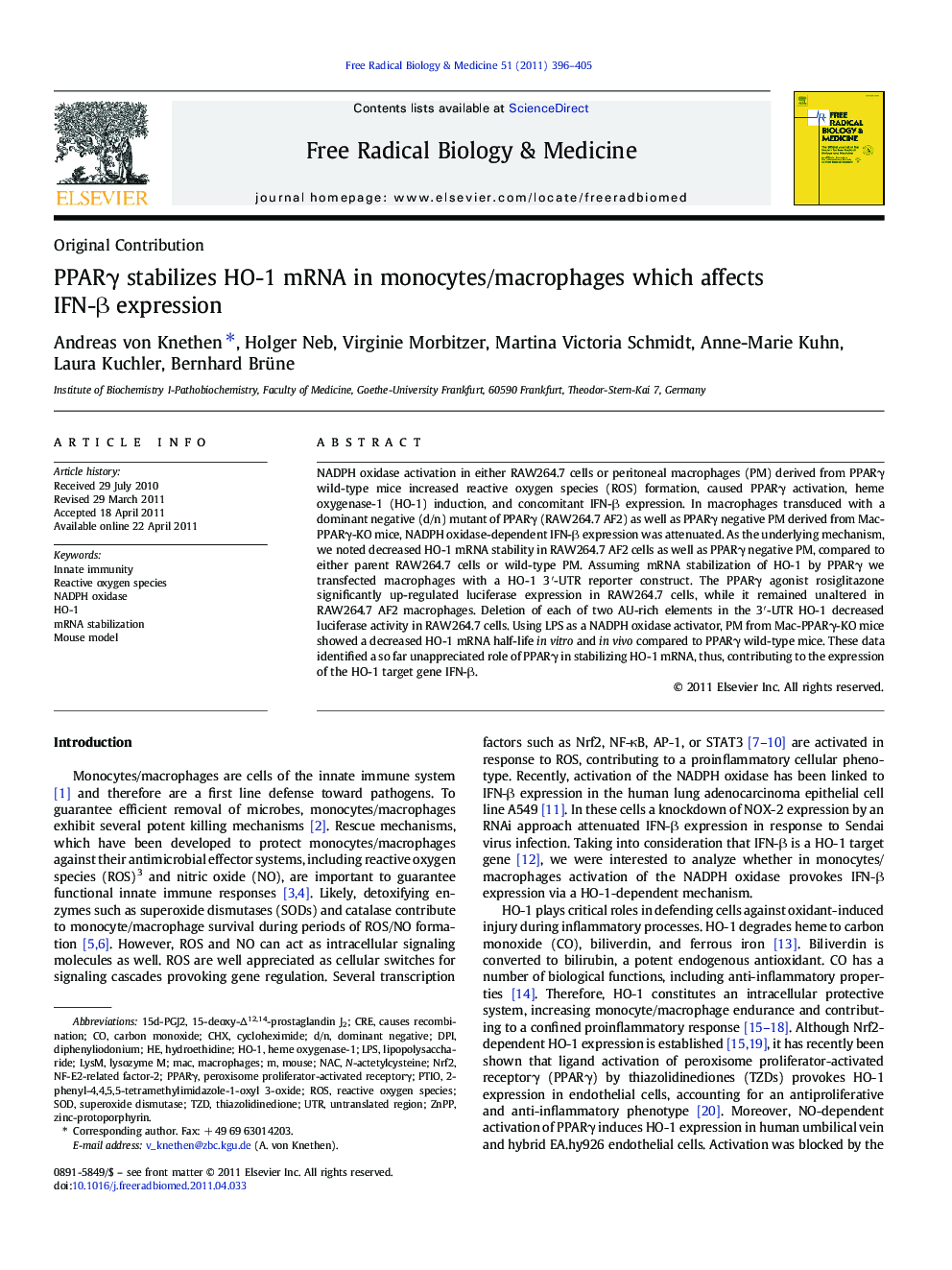| Article ID | Journal | Published Year | Pages | File Type |
|---|---|---|---|---|
| 10738072 | Free Radical Biology and Medicine | 2011 | 10 Pages |
Abstract
NADPH oxidase activation in either RAW264.7 cells or peritoneal macrophages (PM) derived from PPARγ wild-type mice increased reactive oxygen species (ROS) formation, caused PPARγ activation, heme oxygenase-1 (HO-1) induction, and concomitant IFN-β expression. In macrophages transduced with a dominant negative (d/n) mutant of PPARγ (RAW264.7 AF2) as well as PPARγ negative PM derived from Mac-PPARγ-KO mice, NADPH oxidase-dependent IFN-β expression was attenuated. As the underlying mechanism, we noted decreased HO-1 mRNA stability in RAW264.7 AF2 cells as well as PPARγ negative PM, compared to either parent RAW264.7 cells or wild-type PM. Assuming mRNA stabilization of HO-1 by PPARγ we transfected macrophages with a HO-1 3â²-UTR reporter construct. The PPARγ agonist rosiglitazone significantly up-regulated luciferase expression in RAW264.7 cells, while it remained unaltered in RAW264.7 AF2 macrophages. Deletion of each of two AU-rich elements in the 3â²-UTR HO-1 decreased luciferase activity in RAW264.7 cells. Using LPS as a NADPH oxidase activator, PM from Mac-PPARγ-KO mice showed a decreased HO-1 mRNA half-life in vitro and in vivo compared to PPARγ wild-type mice. These data identified a so far unappreciated role of PPARγ in stabilizing HO-1 mRNA, thus, contributing to the expression of the HO-1 target gene IFN-β.
Keywords
TZDCHXPPARγHeme oxygenase-1HO-1NACNrf215d-PGJ2LysMZnPPCRELPScauses recombinationUTRDPI15-deoxy-Δ12,14-Prostaglandin J2PTIOROSNADPH oxidaseInnate immunitymRNA stabilizationThiazolidinedionediphenyliodoniumSODSuperoxide dismutasecycloheximidedominant negativeNF-E2-related factor-2lipopolysaccharideMacrophagesMouse modeluntranslated regioncarbon monoxideMouseMACHydroethidineReactive oxygen species
Related Topics
Life Sciences
Biochemistry, Genetics and Molecular Biology
Ageing
Authors
Andreas von Knethen, Holger Neb, Virginie Morbitzer, Martina Victoria Schmidt, Anne-Marie Kuhn, Laura Kuchler, Bernhard Brüne,
